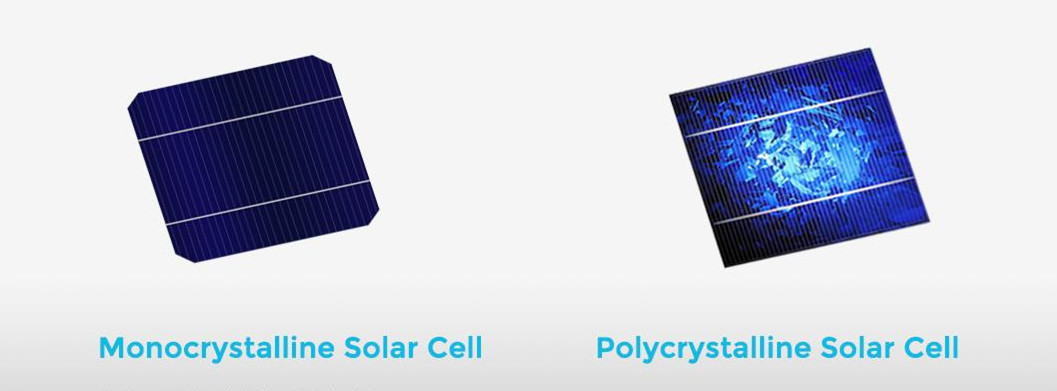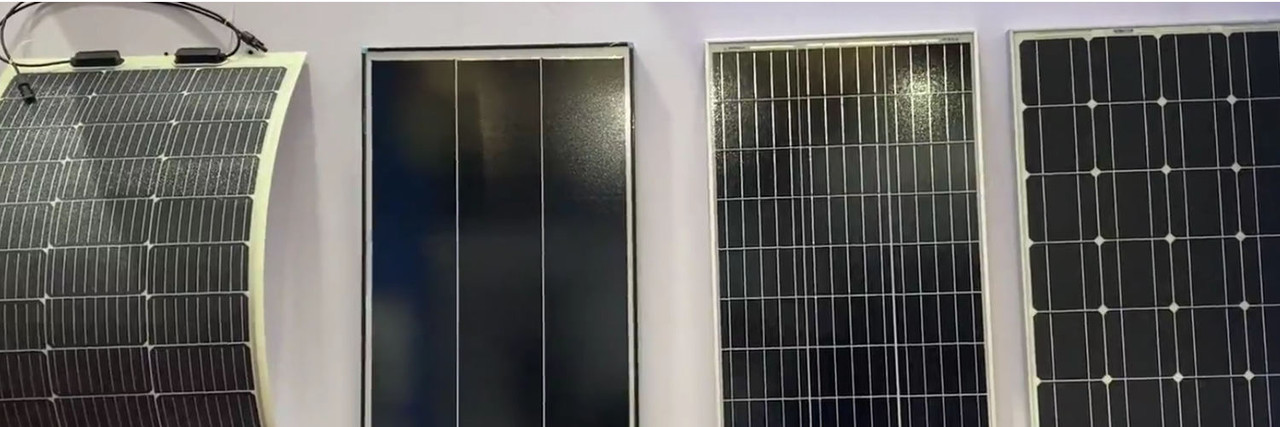Different Types of Solar Panels: Which One is Best for You
There are several types of solar panels available on the market today, each with its own unique set of characteristics and advantages. Whether you're a homeowner looking to reduce your energy bills, or a business owner seeking to embrace sustainable energy solutions, understanding the different types of solar panels is crucial. In this beginner's guide, we'll explore the various options, including monocrystalline, polycrystalline, thin-film, and concentrating photovoltaic (CPV) solar panels. We'll break down their construction, efficiency, cost, and suitability for different applications, helping you make an informed decision about which type of solar panel best suits your needs and budget.
What Are the Primary Types of Solar Panels
Understanding the different types of solar panels is crucial for making informed decisions about solar energy. This guide explores monocrystalline, polycrystalline, and thin-film panels, detailing their unique characteristics, benefits, and drawbacks to help you choose the best option.

Monocrystalline Solar Panels
Monocrystalline solar panels are made from a single, continuous silicon crystal. This manufacturing process results in a panel comprised of silicon wafers that have a consistent, uniform molecular structure. When sunlight hits the monocrystalline cells, the photons catalyze the uniform silicon atoms to dislodge and excite electrons. The excited electrons flow through the cell's conductive metal plates to generate an electrical current. Monocrystalline's high purity allows it to perform well in low-light environments and maintain efficiency over time.
Polycrystalline Solar Panels
Polycrystalline solar panels consist of multiple silicon crystals that are melted together during manufacturing into a quasi-seamless silicon wafer. Because polycrystalline is not a single uniform crystal, there are more boundary areas between the silicon crystals that can impede electron flow. As light hits these boundaries, it gets reflected reducing overall electrical output. However, the multiple crystal approach requires less silicon and reduces costs compared to monocrystalline construction.
Thin-Film Solar Panels
Rather than using a rigid silicon base, thin-film solar panels deposit ultra-thin photovoltaic layers onto a substrate backing like glass, plastic or metal. The photon-absorbing layer is only a few micrometers thick, comprised of materials like amorphous silicon, cadmium telluride or copper indium gallium selenide. When sunlight interacts with the thin layer, it excites electrons to generate a flow of direct current electricity. Thin-film allows for flexible panel shapes and tolerates high temperatures better than crystalline silicon.

How Expensive Are Different Types of Solar Panels
When considering a solar panel installation, one of the major factors is the upfront cost of the panels themselves. The price can vary significantly depending on the type of solar panels you choose.
Monocrystalline solar panels are typically the most expensive option due to their high-purity silicon composition and complex manufacturing process. However, their superior efficiency and energy production often justify the higher price tag over their 25-30 year lifespan. Expect to pay $1-$1.50 per watt for monocrystalline panels.
Polycrystalline solar panels strike a nice balance between performance and affordability. Their production uses less silicon and a simpler process than monocrystalline. As a result, polycrystalline panels tend to cost 10-20% less at $0.90-$1.20 per watt on average.
Thin-film solar panels are generally the most cost-effective option upfront, with prices ranging from $0.60-$1 per watt. Their inexpensive construction using minimal semiconductor materials allows thin-film to undercut crystalline silicon technologies. However, lower efficiency levels mean larger thin-film arrays are required to produce the same power output.
Beyond solar panel costs, other factors like racking equipment, wiring, inverters and labor significantly impact total system pricing.
How Efficient Are Different Types of Solar Panels
Solar panel efficiency is a crucial metric that determines how much electricity a panel can produce from a given amount of sunlight. Higher efficiency translates to greater energy output and lower costs over the system's lifetime. Different types of solar panels exhibit varying efficiency levels.
Monocrystalline solar panels are the most efficient option, typically ranging from 15-22% efficiency under standard testing conditions. Their single-crystal silicon construction and uniform molecular structure allow them to absorb and convert solar energy extremely well. Top monocrystalline panels have lab efficiencies exceeding 24%.
Polycrystalline solar panels are slightly less efficient than monocrystalline, with average efficiencies around 13-18%. While cheaper to manufacture, the multiple silicon crystals create electrical resistance that inhibits output compared to pure monocrystalline wafers. However, polycrystalline's efficiency-to-cost ratio makes it an excellent value for many residential installations.
Thin-film solar panels generally have lower efficiencies in the 7-13% range, depending on the photovoltaic material used. Amorphous silicon offers efficiencies around 7-9%, while cadmium telluride and CIGS are typically 9-13%. Though less space-efficient, thin-film's simple construction and flexibility can make it optimal for large-scale solar farms and niche applications.
As solar technology advances, efficiencies across all panel types continue improving. Selecting the right balance of cost, efficiency and energy needs is essential when choosing between different types of solar panels.
Which Solar Panel Type is Best For You
Now that you understand the key differences between the main types of solar panels, how do you determine which option aligns best with your specific energy needs and situation? There are several important factors to consider.
If maximum energy production and efficiency are priorities, monocrystalline solar panels are hard to beat. Their high silicon purity allows monocrystalline to generate the most power per square foot of any panel type. This makes them ideal for residential rooftops with limited space. The greater upfront costs can be offset by higher lifetime output.
For homeowners or businesses on tighter budgets, polycrystalline solar panels offer an excellent efficiency-to-cost ratio. While not as efficient as monocrystalline, polycrystalline delivers reliable performance at a much lower price point. They provide a great balance for average energy consumers. Explore the differences between monocrystalline and polycrystalline solar panels to make an informed choice for your energy needs.

Thin-film solar panels are the most cost-effective solution, though their lower efficiency requires more space. They truly shine in hot, sunny climates where their heat tolerance optimizes energy generation. Thin-film panels are also very portable and flexible, making them perfect for mobile or uniquely-shaped installations.
Other factors like climate, panel orientation, shading and desired system size all influence which types of solar panels make the most sense. Consulting local solar installers can help analyze your needs and provide customized recommendations to maximize long-term value and savings.
Conclusion
Selecting the right types of solar panels is crucial for maximizing your return on investment in renewable energy. While monocrystalline offers unbeatable efficiency, polycrystalline provides excellent value, and thin-film excels in specialized applications. For off-grid situations like RVs, boats, or cabins, Renogy's versatile thin-film panels are a superior off-grid solution. By understanding the pros and cons of each solar panel technology in terms of performance, costs, and your unique needs, you can make an informed decision. As solar continues advancing, having a grasp of the primary types of solar panels will prepare you to take advantage of sustainable energy solutions now and in the future. Careful evaluation ensures you implement a system ideally suited for reliable, cost-effective solar power generation.
FAQs
1. How do you identify different types of solar panels?
Monocrystalline panels are black with rounded edges, known for high efficiency. Polycrystalline panels are blue with straight edges and have a speckled appearance, typically more affordable but less efficient. Thin-film panels are thin, flexible, and dark with a smooth surface. Identification can also be confirmed through product labels and manufacturer specifications.
2. How many solar panels are needed to run a house?
The number of solar panels needed to run a house depends on energy consumption, panel efficiency, and sunlight availability. On average, a typical household may require 20 to 30 panels to cover its electricity needs. For an accurate assessment, analyze specific energy usage and available roof space for installation. Learn more about how to determine how many solar panels do I need from multiple details.
3. How long do different solar panels last?
Monocrystalline and polycrystalline solar panels typically last 25 to 30 years, maintaining high efficiency. Thin-film panels have a shorter lifespan, usually lasting 10 to 20 years. The lifespan of solar panels is influenced by material quality and environmental conditions. These are not the only factors that determine how long solar panels last. There are also many other tips for extending the service life of solar panels. For example, Regular maintenance can help extend their longevity.








